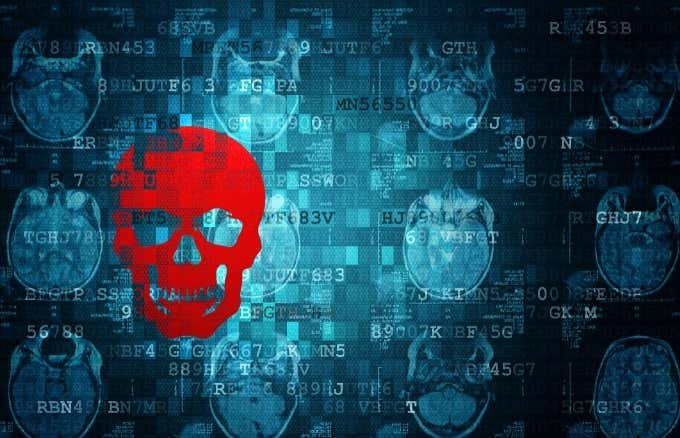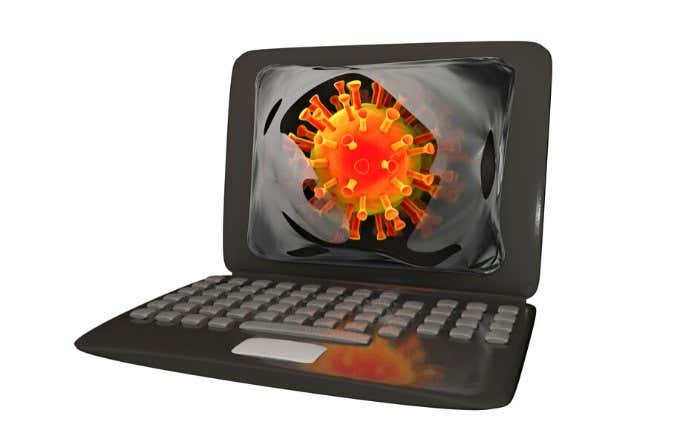Anyone who has ever had a virus in their computer system knows how stressful it can be. It doesn’t matter whether you have an advanced or strong security software program, there’s still a possibility that viruses can get past all its defenses, and infect your machine.
Some of the most common symptoms of a possible virus infection in computers include poor or slowed performance, a misbehaving PC, computer freezing or application crashes. However, these aren’t always necessarily caused by viruses, as it could be a result of other factors.

There’s no one-size-fits-all cause that you can pinpoint and say it’s the work of a virus in your computer, until you actually scan it. Sometimes they cause problems, while other times they behave well but still work in the background.
That said, if you’re seeing all the telltale signs and your gut has you asking “Do I have a virus?”, we’re going to look at some of the major and minor signs to look out for, and what to do to remove the virus from your computer plus prevention measures to prevent future attacks.
What Is a Computer Virus?
A computer virus is malicious software that latches onto and rides on legit application codes in your computer system to reproduce and spread itself. It is deployed with the intention of taking control of and/or damaging your computer.
Computer viruses share similar traits to biological viruses in many ways including how they pass from one computer to another, and piggyback on other files or programs to launch, among other traits.
Every day, a new virus is written with the intention of harming regular people like you who browse the web using their computers, oblivious of the dangers that lurk therein.

Hackers and scammers too have become sneakier and trickier, cleverly masking their threats such that a single click can instantly render you a victim of a computer virus.
They simply write the code for the virus, and then test it to ensure it spreads properly before releasing it to wreak havoc on computer systems and other devices. They also design the attack phase, which can take different forms.
Some do it for the thrill of it to see how things blow up, others just want the bragging rights, while some are in it for the cold, hard cash they can get when you’re tricked into buying fake software, or sharing your personal information, which they use to steal your money.
How a Computer Virus Works
In the same way the flu infects and multiplies in your body’s immune system, a computer virus infiltrates your machine and its programs. Such malicious programs can be installed on your device without your consent or knowledge, and can inject malicious code that can manipulate and monitor your activity on the web.

Generally, a virus takes the following course when infecting your computer: the malicious application executes at the user’s request, and the virus code gets loaded into the computer’s CPU memory just before executing the legitimate code.
Once that happens, the virus begins to propagate by infecting your computer’s programs and applications and inserts malicious code as much as possible.
Depending on whether the virus resides in your computer or not, or it’s a boot sector virus, it can insert malicious code to programs as they open, executable files, or in the boot sector of the system disk such that it executes before your operating system loads fully.

At this point, it’ll execute the virus code, which its creator built it for, also known as payload. It then scans your computer’s hard drive for all sorts of things including your keystrokes, banking credentials, or turns your machine into a weapon for DDoS attacks against others. The attacker can use it to encrypt your data and demand ransom in exchange for restored access to your files and data.
During the pre-internet days, viruses spread via infected floppy or flash disks, but today, they can spread via the internet, or from computer to computer through virus code. They can also spread through email attachments, apps, or downloads from an infected repository.
Warning Signs That You Have a Virus on Your Computer
There are many different types of viruses categorized differently based on their behavior, which means some can fall into one or more categories. If you strongly feel your computer could have a virus but can’t quite tell whether it slipped past your security software’s defenses, here are some warning signs that tell you have a virus on your computer.

Slow Computer
If your computer is slow to boot or open programs, it’s likely that it’s infected with a virus. There are several factors that could affect your computer’s performance, but a virus is the most concerning because some types allow attackers to use its power for their own illegal purposes like mining crypto or carrying out a DDoS attack, all of which affect its performance.
Random Or Strange Fan Behavior
The fans in your computer help draw cool air while expelling warm air into the computer’s case, and kick into overdrive during resource-intensive tasks like gaming. However, if you notice strange behavior with the fans, it could be a sign of a virus infection, especially if the fans spin at maximum revs even when the computer is idle, or it gets abnormally hot.
Frequent Computer Crashes
This, coupled with the blue screen of death, could indicate the presence of a virus or problem with your computer. It’s not easy to pinpoint the exact cause as sometimes it could be due to overheating, driver problems, hardware issues or errors with the operating system.
Slow Internet Connection

This is often attributed to viruses and malware, which can hijack your connection and use your bandwidth for other activities. If you notice your connection is slow or there’s unusual high network activity, it could be that your computer has a virus. Sometimes you can lose your connection altogether.
Strange Browser Extensions You Didn’t Install
If you see new browser extensions that look strange, and that you don’t recall ever installing, your computer could be having a virus. Some extensions are legit and useful, but others can collect your personal data and sell it to a third party, or put your system at risk.
Browser Redirects
Redirects are common with virus infections, especially if you end up on sites you didn’t intend to visit. Such sites are usually laced with malware, and are used as dens for collecting personal information from unsuspecting users, or even encourage them to download more malicious software. Sometimes they’re used to drive traffic to such sites, in turn helping the cybercriminals make more money from ad impressions.
Increased Frequency Of Popup Ads Appearing On Your Screen

If you suddenly start seeing popup ads other than the usual frequency, or your browser’s homepage changes and the experience is slower, your computer could be infected with a virus. Some unwanted programs usually come with adware that leverages this opportunity to display unnecessary popup ads on get rich quick schemes, weight loss, and other phony virus warnings.
Irregular Social Media Account Behavior
This is another common sign that your computer has a virus, when your friends start receiving spam messages purportedly from you. They can get strange messages or comments from your account, which could be a sign that it has been compromised, or your computer is infected.
Security Software Won’t Run Or Doesn’t Work Properly
Your computer’s antivirus and security software helps protect it against the new malware that emerge by the day. However, some strains can disable it and stop it from running scans or updating, which is a telltale sign of viruses in your computer’s system.
If you notice the antivirus on your computer behaves differently from the norm, or you get warning messages about the system being unprotected, you could be dealing with a virus.
How to Remove Viruses From Your Computer and Prevent Future Infections

It’s not that easy to remove a virus from your computer, but you can use some or all of the solutions and measures listed below to cleanse your system and restore it to normalcy:
- Close unnecessary applications that consume resources and cause your fans to speed up. Check if they return to normal speed.
- Check for any notifications from Windows Defender Security as to whether your antivirus is disabled, and check for suggested solutions Restart your PC to re-enable your antivirus software as sometimes operating system and software updates can affect its functionality.
- Sign out from any compromised accounts on your computer and other devices
- Scan your computer for malware. If you have Windows Defender Security and it doesn’t flag files or programs with the virus, try using a variety of antivirus software as they each have their own virus signature databases. It’s also a good way of seeing what’s going on with better accuracy.
- Install an anti-phishing browser extension to stop dangerous sites from loading when you get redirected. Uninstall any such extensions that you didn’t install in the first place.
Other measures you can take to prevent future attacks include changing your passwords, enabling two-factor authentication, checking any of your downloads before they get into your system, and installing reliable security software plus a good ad blocker for a better browsing experience.